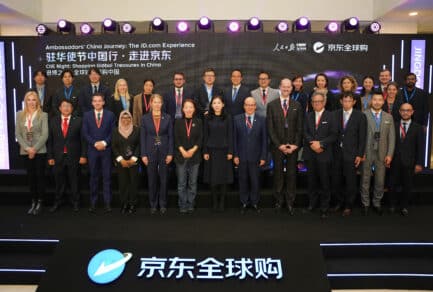Aug 13, 2020|
JD Data: Summer “Must-Haves” for China’s Consumers
by Ella Kidron
What do the hot summer months have Chinese consumers craving? JD Big Data has the answer. In a recently released report (in Chinese), JD Big Data Research Institute looked at what summer-related products consumers across China are buying, broken down by geography and age group.
In the month of July*, food (non-fresh) and non-alcoholic beverages, alcohol, fresh produce, sun protection, and cooling products have gotten more attention from consumers across the country. It turns out, though, that consumers’ “summer fix” varies for consumers in different regions and age groups.
The southern provinces of Guangdong and Zhejiang saw alcohol transaction volume increase 60% YOY. In Hubei and Hebei, transaction volume of food and non-alcoholic beverages increased over 50%. Beijing consumers opted for more fresh produce, with transaction volume increasing 130% YOY. Heilongjiang and Gansu provinces saw cooling devices like ACs and fans increase 110% YOY.
Looking at alcohol consumption by age group, post-90s consumption is increasing the fastest, with these consumers preferring liquor over other alcohols. Post-80s consumers tend to choose cocktails and cocktail mixers, while post-70s consumers stay true to Baijiu. Tibet, Shaanxi, Gansu, Guangdong, Zhejiang, Guizhou, Chongqing and other areas saw alcohol consumption increase over 60% YOY.
When it comes to food, post-90s consumers prefer puffed food, perhaps relying on their youth to minimize the blow of these less nutritionally viable treats. Post-80s opt for nourishing Oolong and Iron Buddha tea, while the post-70s cohort is more focused on organic food. Male consumers account for over 70% of purchases of Longjing, a popular green tea also known as Dragon Well, Pu’er and other tea varieties, whereas female consumers account for 60% of purchases of baked goods, rice and flour and condiments. In Xinjiang, Hubei, Hebei, Shandong and Beijing, food consumption increased 50% YOY.
Fresh produce preferences vary by age too. While post-90s consumers choose crab and the more exotic durian, post 80s consumers lean towards antioxidant-rich pomegranates and young coconut. Fresh food consumption was noticeably higher in Beijing, increasing 130% YOY, while Tibet, Ningxia, Gansu, Shanxi, Hebei and Jilin all saw sales in the food and beverage category increase over 65% YOY.
Rather than rely on a shady spot to rest, many Chinese consumers prefer to bring the shade with them. Turnover of sun umbrellas increased over 80% YOY. Younger consumers are getting into the sun protection game earlier than in the past, with the proportion of age 18-25 consumers accounting for 11% more of sales. Age 46 and up consumers are buying more cooling products, accounting for 26% of sales. From a regional perspective, overall consumption of sunscreen-related products in Guangdong, Heilongjiang, Tibet, Jilin and Hainan increased nearly 50% compared with the same period last year, while Qinghai, Jiangxi, Guizhou, Sichuan and Guangxi saw an over 50% increase in cooling products.
*Note: Data for 2020 covers July 1-25, and the YOY comparison refers to the same period (July 1-25, 2019)

 JD’s Omnichannel Fulfillment Program Wins National Award
JD’s Omnichannel Fulfillment Program Wins National Award



